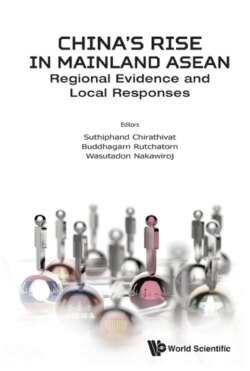Читать книгу China's Rise in Mainland ASEAN - Группа авторов - Страница 11
На сайте Литреса книга снята с продажи.
1.2.1.Big Picture
ОглавлениеThe first section discusses opportunities, challenges, and implications of both Xi Jinping Thought and Lancang–Mekong Cooperation in relation to mainland ASEAN. Highlighting the unprecedented move from core ideas to the effects of implementation is discussed in context of the Southeast Asian region. In this section, Vira Somboon in his chapter “Xi Jinping Thought and Mainland ASEAN” argues that President Xi Jinping holds threefold supreme leadership over the party, the military, and the state of the People’s Republic of China, as well as providing the main ideational, ideological, and discursive formations of Chinese society. This chapter reviews the core ideas, strategies, and policy guidelines inherent in the “Xi Jinping Thought” on “Socialism with Chinese Characteristics for a New Era”, particularly those issues pertaining to China’s rise at the global scale and its new phases of development. It then relates these themes to China’s orientation towards ASEAN, in general, and mainland ASEAN, in particular. It argues that, in terms of ASEAN, it is Singapore which constitutes the most significant geo-political and geo-economic leverage for China. And, as far as mainland ASEAN is concerned, it is the overall power position of China as the “hydro-hegemon” of the Mekong River Basin that determines positive and negative configurations of international cooperation in this vast area. China views its economic and connectivity schemes in the Mekong sub-region as important parts of the BRI. It remains to be seen if this will bring about what may be styled after China’s own terminology: “One Belt, One Road, One River.” This chapter raises a general question about mainland ASEAN and China, i.e. whether mainland ASEAN is simply a supplementary passage for China’s actual destination elsewhere.
Yang Baoyun and Patcharinruja Juntaronanont in their chapter “The Effects of the Lancang–Mekong Cooperation on Mainland ASEAN Countries: Opportunities or Challenges?” underline the importance of the recent sub-regional initiative for both sides. In recent years, cooperation between China and mainland ASEAN has been expanding and is being deepened in various fields through different levels of cooperation. The Lancang–Mekong Cooperation mechanism (LMC), established in March 2016, has created a new platform for cooperation between China and mainland countries in Southeast Asia, namely, Cambodia, Lao PDR, Myanmar, Thailand, and Vietnam. In a few years since the establishment of the LMC, a series of concrete achievements have been made to provide new opportunities for cooperation between China and the countries of the Mekong River Basin in the fields of politics, security, economy, culture, and society. At the same time, there are still some doubts about this cooperative mechanism in the countries concerned. This chapter intends to do some preliminary analysis on the opportunities and challenges brought by the LMC mechanism for the Southeast Asian countries with China.
